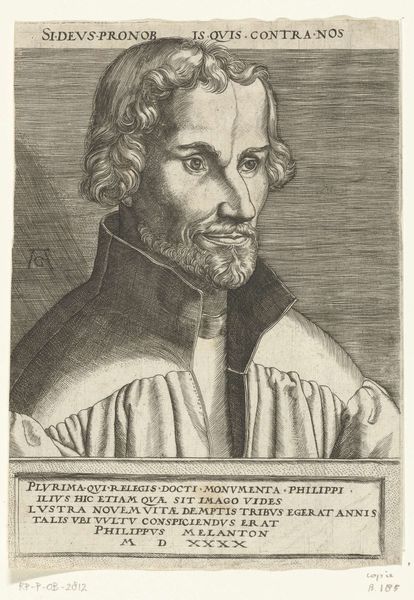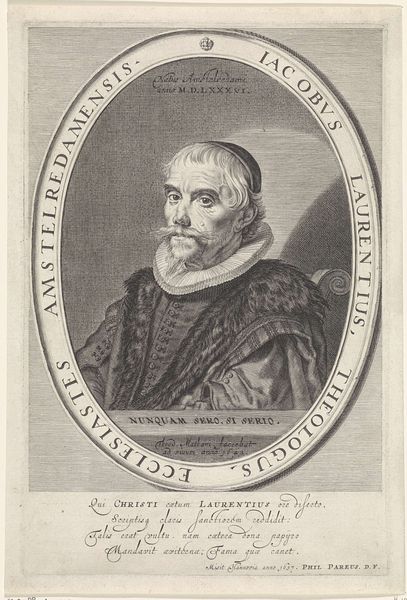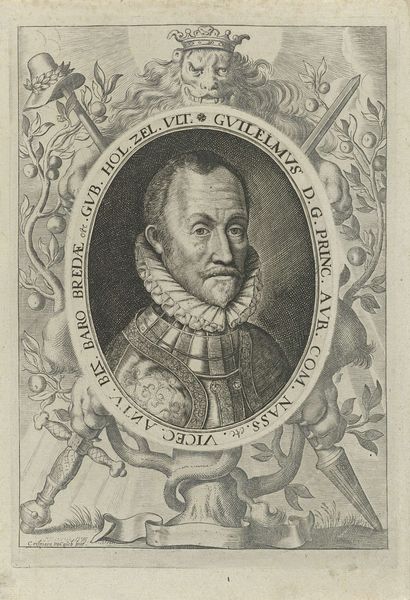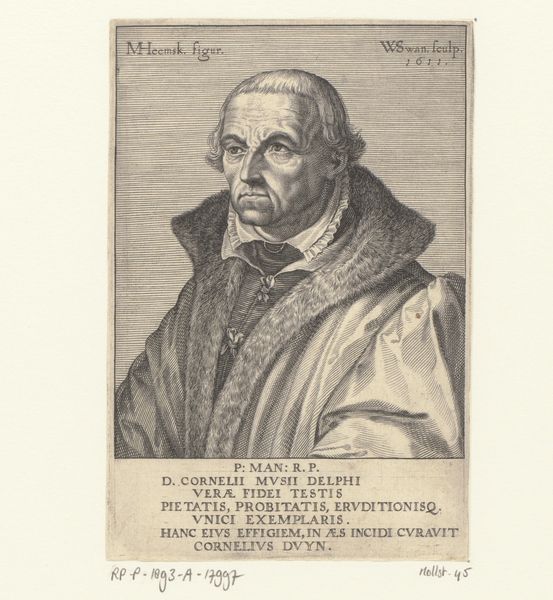
engraving
#
portrait
#
11_renaissance
#
northern-renaissance
#
engraving
Dimensions: height 168 mm, width 117 mm
Copyright: Rijks Museum: Open Domain
Curator: Sober, isn't it? All that rigorous hatching rendering flesh and fur. Editor: Indeed. What we’re looking at is a portrait of Cornelis Musius, created between 1604 and 1606 by Philips Galle. It's an engraving, a print, so its impact stems from skilled labor with metal and acid rather than pigment and brushstrokes. A mechanically reproduced image intended for wider circulation. Curator: A stern, unflinching gaze—like the weight of scripture made manifest. He’s 72, it says up there, the year he earned his martyr's crown, though what’s behind those eyes… what was the man wrestling with? That expression, so individual amidst the formulaic fur collar. Editor: The fur screams "affluence". It denotes a burgher’s comfort and authority, the rise of a merchant class shaping the very cities and landscapes of the era. Note the precision of the lines—each etched stroke dictates the fall of light, the texture of the pelt. Engraving allowed for an unprecedented level of detail, a control over the printed image previously unknown. Think about the cost and labour investment—metal plates meticulously etched by skilled artisans. It was a carefully curated process aimed to propagate and solidify the sitter’s public persona and ideological values through mass media. Curator: He wears the mantle of civic pride perhaps too heavily. There’s no levity here, no joy in being memorialized, only a stark presentation. And look at the verse…a somewhat pompous ode to his virtues. One almost feels sympathy for the man—burdened with piety, stiff in his finery, caught between the earthly and divine. Editor: Look closer. Each line bears the mark of a deliberate choice. We see in the text at the base his association to Delft and its intellectual circles, crucial for establishing his position and worth in society. And though static, the image is reproducible—replicable across hundreds of prints—spreading its political and spiritual messaging far beyond the immediate vicinity of the sitter. Galle isn't just portraying a man; he is mass-producing an image of status and legacy, to solidify it beyond his lifespan. Curator: So, not merely an image then, but a carefully manufactured artifact of reputation? Makes me wonder what truths have been smoothed away in service to this stony icon. Editor: Exactly! And in examining the means, in asking whose labor created this image, and how, we reveal so much more about the society and material conditions that birthed it.
Comments
No comments
Be the first to comment and join the conversation on the ultimate creative platform.













